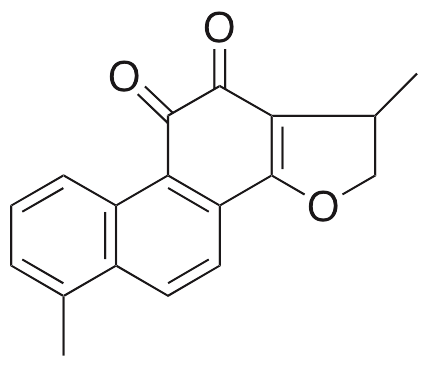Description
Dihydrotanshinone is found in Salvia that exhibits neuromodulatory, anticancer, anti-inflammatory, anti-allergic, anti-diabetic, antithrombotic, vasodilatory, antihypertensive, and anti-angiogenic activities. Dihydrotanshinone binds to the P-site of acetylcholinesterase (AChE), inhibiting its activity and showing potential benefit as a treatment for Alzheimer’s disease. Dihydrotanshinone also inhibits fatty acid synthase, mineralocorticoid receptors, and glucocorticoid receptors, suppressing expression of the Na+/K+ ATPase, G6Pase, and PEPCK; it also increases activation of AMPK. In colorectal cancer cells, dihydrotanshinone upregulates expression of ATF-3 and induces apoptosis, inhibiting proliferation. This compound also inhibits activation of AP-1 and NF-κB in vitro and suppresses passive cutaneous anaphylaxis in vivo by decreasing production of allergic mediators IL-4 and TNF-α. Dihydrotanshinone inhibits collagen-induced thromboxane B2 (TxB2) production and platelet aggregation in vitro. Additionally, dihydrotanshinone induces vascular relaxation in coronary artery rings in a Ca2+-dependent manner. This compound also inhibits migration, invasion, and tube formation in cellular and animal models of angiogenesis.
